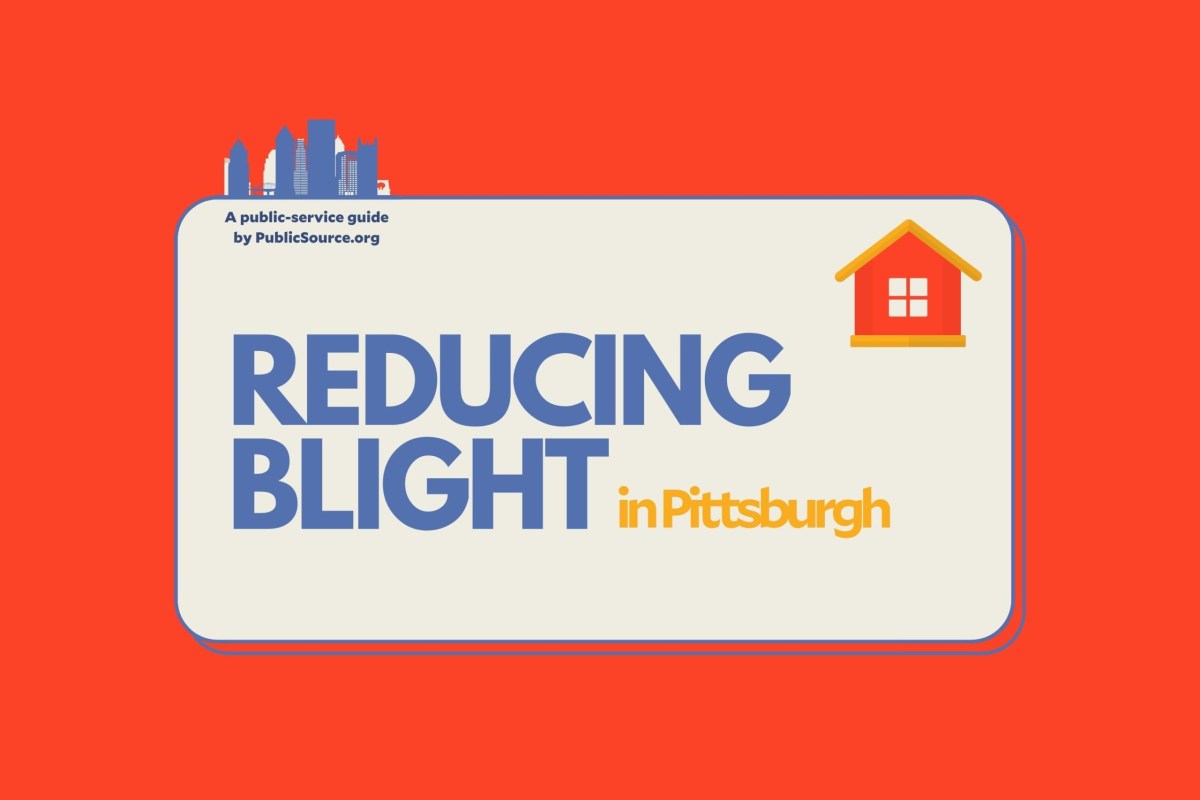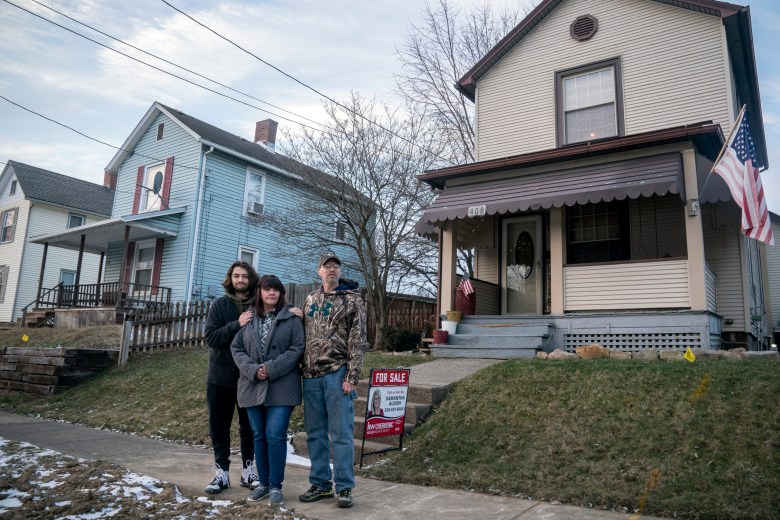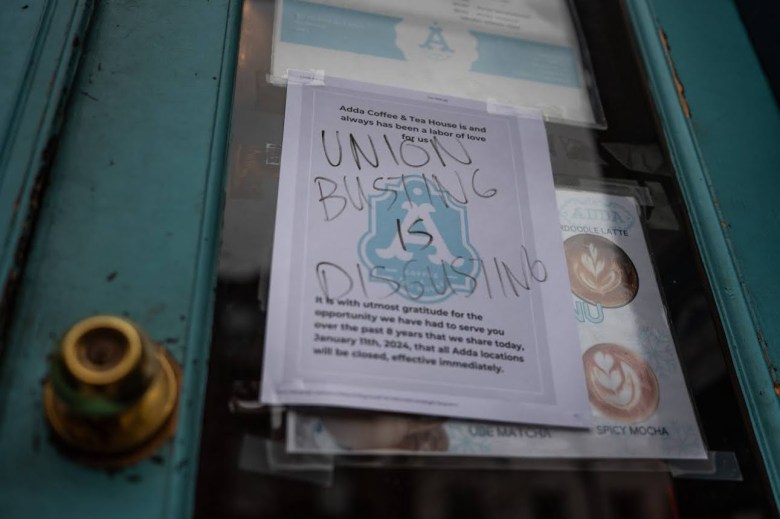Pittsburgh is checkered with thousands of vacant properties — some are dangerous, some are just eyesores, but they’re awaiting their fate of rehabilitation, demolition or decay.
The city defines blight as any physical space or structure in such poor condition that it’s lost its functionality. It’s created through decades of neglect and harmful practices, and the city can take just as long to remedy it.
“I’ve watched my neighborhood precipitously decline over time, in cultural assets of buildings that mean a lot to me and my fellow Hill District residents,” said Diamonte Walker, the deputy executive director of the Urban Redevelopment Authority. “We’ve seen them atrophy and disintegrate and disappear, and it’s heartbreaking. And that is not just the story of the Hill District, it’s happening across the city of Pittsburgh,”
This is why blight is particularly concentrated in communities that have historically been disinvested in, like Hazelwood and Larimer, Walker added.
What can you, as an individual resident, do to help address blight in your neighborhood?
What does blight look like?
There are nine qualities the city looks for when categorizing a property as blight, only needing to find three for the property to be considered blighted:
- The property is a public nuisance.
- The property is unfit for human use.
- The property is dangerous for children.
- The property is used for illegal activities.
- The property has a dilapidated appearance.
- The property is a fire hazard or other safety hazard.
- The property needs substantial rehabilitation, with no efforts made in the past year.
- The property has accumulated debris, pests, uncut vegetation and deterioration that the owner has made no effort to remove.
- The property is subject to unauthorized entries, and either the owner or municipality has failed to secure the building.
I live near a blighted property. What’s my first step?
Blight isn’t usually an issue that Pittsburghers can address individually — just about every step of the remediation process involves the property owner, the city and/or community organizations. With so many actors at play, who should be your first call?
Call 911 if a blighted property near you appears to be causing imminent danger.
If the property isn’t an imminent safety hazard, try contacting the property’s owner to let them know about the issues you’ve observed, said Joanna Deming, the executive director of the Fineview Citizen’s Council and Perry Hilltop Citizen’s Council.
How can you find the property’s owner? First, enter the blighted property’s address into Allegheny County’s Real Estate Portal to find the owner’s name. Under the “Tax Info” tab, you can find the owner’s mailing address to send them a letter.
Part of the issue may be that owners don’t have the knowledge or capacity to address the issue on their own. You can also try connecting them to community groups who understand the repair process — like the grants available for home repairs — who can help owners resolve issues with their properties.
Some owners may address the issue immediately after hearing from you; others may not. So who’s your next call if you don’t hear back from the owner?
Deming recommends calling a community group if you want to see the property get renovated. Community groups are familiar with navigating the preservation process and can push the city to prioritize concerns about the property.
But if you just want the blight gone – even if it’s just an abandoned, overgrown yard – you can report it to the city by either calling, texting, tweeting or submitting a form to the city’s 311 Response Center, which coordinates responses for non-emergency services. The MyBurgh app also allows you to submit a request to the 311 Response Center, along with a picture of the blighted property, and receive updates to track the status of your request.
After receiving your request, the city may send an inspector from the Department of Permits, Licenses and Inspections [PLI] to look at the property within a few days. You can also directly call PLI at 412-255-2175.
You can also call the Allegheny County Health Department at 412-350-4046 or submit an online complaint form if you think the property is a health hazard, including if you notice issues like rodent infestations or tall weeds.
What happens during a PLI inspection? What are the outcomes?
During the inspection, PLI will examine the property’s exterior. If it has a structure, PLI will determine if it qualifies as a condemned building — one that is unfit for human occupancy.
PLI ranks how dangerous condemned buildings are on a scale from zero to 60 using factors like potential to collapse and proximity to nearby occupied properties. Properties that receive rankings above 30 are considered for demolition. The city also demolishes buildings that are imminently dangerous.
“Just because something is condemned doesn’t mean it’s gonna fall down or is imminently dangerous right now,” said Sarah Kinter, director of PLI. “In fact, there is redevelopment potential for many, if not most, of the condemned buildings. But condemned buildings are absolutely a nuisance.”
Currently, PLI has identified about 2,000 condemned buildings across the city, of which a “low percentage” are ranked above 30. The city conducts about 70 demolitions per year, fluctuating slightly throughout the COVID-19 pandemic.
You can also check if the building is already scheduled to be demolished using Burgh’s Eye View, a website tracking the status 311 Response Center requests.
If demolition is recommended, Deming said it may take a while to see the property actually destroyed. She’s found it can take three to six months to see imminently dangerous properties torn down, and some other properties are never actually demolished despite the city’s recommendation.
“There’s so few resources that it may not get demolished,” she added.
If demolition isn’t recommended, PLI will return to the property to conduct a second inspection within five to 30 days of its initial visit and could come back for a third inspection if nothing’s fixed. If violations persist, the property owner could have to take part in a property hearing at a local court, which will determine if they’ll be fined, given more time for compliance or have the case dismissed. The hearing could take two to three months to schedule. If there’s no property owner, PLI will periodically inspect the property and work with other agencies to redevelop it.
“We want to see these properties put back into productive use,” Kinter said. “From a building safety perspective, our expectation is that a condemned building will, if taken up by the private market, be demolished, or permits will be taken out through PLI to abate the violations and make the structure habitable again.”
Walker, who is also executive director of the Pittsburgh Land Bank, wants to establish the bank as the “first front door” for remediating blight, with hopes of launching a pilot program in the fall.
“Right now, you’ve got to make quite a few phone calls across the City of Pittsburgh to have blight remedied and addressed,” Walker said. “What we have tried to do is, if you see something that’s not right and you call the URA about it, you’re going to get it to the right party.”
The city’s land bank was created in 2014 to streamline the process for purchasing city-owned properties. The land bank is charged with distributing properties to approved buyers who demonstrate they’ll repurpose it for productive use, whether they’re an individual, community group, developer or other entity. The land bank has faced criticism for experiencing years of delays, but Walker expects the pilot will be operational this year.
Read more about purchasing properties through the Pittsburgh Land Bank.
I’ve requested the city remediate blight near me. How do I speed up the process?
With such a high quantity of vacant properties, city officials receive hundreds of requests for remediating blight. The city acquires properties through means like judicial proceedings, treasurer sales and donations. A 2019 audit by City Controller Michael Lamb found that some properties remain in the city’s possession for more than 50 years without a demolition or development plan, despite applications to rehabilitate them.
So if action seems stalled, how do you speed up the process?
Deming recommends contacting your elected official about the property – they may be able to convince the city to prioritize your request. You can also ask community groups to help share your concerns with officials or talk about the issue at community meetings.
- Contact your City Council district’s office.
- Find your neighborhood’s Registered Community Organization and attend a meeting.
Individuals can submit feedback and concerns about blighted properties to PLI directly through the city’s EngagePGH website, including any nuisance activities — like break-ins and arson — that may be taking place on the property, Kinter said.
What if I want to purchase the property, not just report it?
Purchasing a blighted property can be an expensive, complicated process, but there are options if you have the capacity to invest the time and resources.
For blighted properties with private owners, Pennsylvania’s Abandoned and Blighted Property Conservatorship Act allows responsible residents and organizations to assume stewardship — not full ownership — with court supervision. Some believe it’s a tool for aggressive developers to cheaply obtain properties, but it offers a way for individuals to gain the authority to rehabilitate a property.
One option for purchasing blighted properties is filing a request with the city’s Department of Real Estate to include it in a future court auction sale, an event typically held three times per year where people bid to purchase vacant, tax-delinquent properties.
To purchase property at the sale, you must become an approved buyer — a vetting process where the city confirms you’ve paid taxes and have no PLI violations on all properties you own within city limits. The approval process typically can take six months or more.
Read more about court auctions.
If you own a property or operate a business within 2,000 feet of the blighted property, you’re also eligible to become its conservator as long as you’re in compliance with your taxes. The property itself must also be eligible for conservatorship: It must be considered unoccupied for over a year, off the market for the past 60 days, acquired by its owner more than 60 days ago and not subject to existing foreclosure action.
Deming estimates the process to becoming a conservator can cost between $5,000 to $10,000, excluding the rehabilitation. Most times, residents need a lawyer’s help navigating the process.
“What I often tell people is if you really want to do something about it, you have the money to put towards it, this is something you could do to actually get control to take care of this situation,” Deming said.
Read more about conservatorship.
Amelia Winger is a freelance reporter based in Philadelphia and a former PublicSource intern. She can be reached at amelia@publicsource.org.
This story was fact-checked by Dalia Maeroff.






